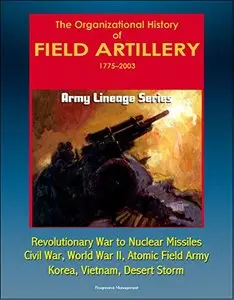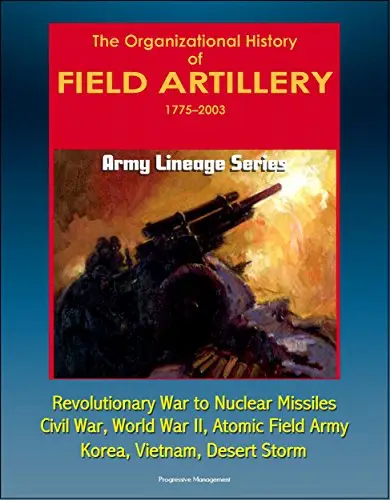Army Lineage Series: The Organizational History of Field Artillery, 1775 - 2003 - Revolutionary War to Nuclear Missiles, Civil War, World War II, Atomic Field Army, Korea, Vietnam, Desert Storm by U.S. Government
English | Feb 19, 2015 | ASIN: B00TTDWQT2 | 534 Pages | EPUB/MOBI/AZW3/PDF (Converted) | 33 MB
English | Feb 19, 2015 | ASIN: B00TTDWQT2 | 534 Pages | EPUB/MOBI/AZW3/PDF (Converted) | 33 MB
The volume published by 1st Lt. William E. Birkhimer on the history of artillery in the United States Army was the standard work on the subject for over one hundred years. Lieutenant Birkhimer's history is a valuable contribution to understanding the background of artillery in the United States through the Civil War period, but artillery has changed radically since its publication. This volume, The Organizational History of Field Artillery, 1775-2003, addresses the need for a modern work that records the historical structure, strength, disposition, materiel, and technical and tactical doctrine of artillery in the U.S. Army. It complements the lineage volume on Regular Army and Army Reserve field artillery regiments, published in 1985 but currently being updated to include commands, brigades, groups, and regiments in all three components. In the last thirty years, several books on field artillery have appeared, some popular histories and a few scholarly works, but the focus of this volume is on the organizational structure of U.S. Army artillery rather than its weapons or its operations. In the main, the narrative is chronological, with nuclear missiles and rockets covered separately because their history did not follow that of cannon artillery.
The term artillery originally referred to all engines of war designed to discharge missiles, such as the catapult, ballista, and trebuchet, among others. Toward the end of the Middle Ages, weapons employing gunpowder superseded such engines of war, and in a more restricted sense, artillery came to mean all firearms not carried and used by hand. By the mid-twentieth century, it included all manner of large guns (as distinguished from small arms), howitzers, rockets, and guided missiles, and also came to be applied to the personnel who transport and service the weapons and to the organization and branch of the Army to which the personnel are assigned.



